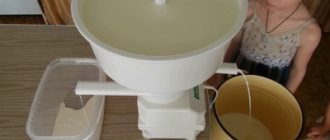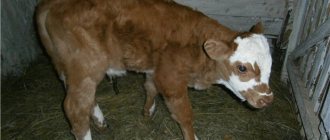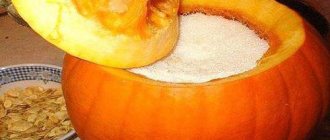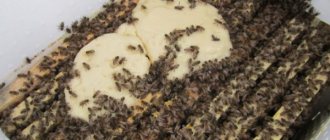How to breed?
Now you know that today many farmers, when choosing feed for calves, often use modern feed mixtures, which are as nutritious as regular milk. Manufacturers choose as raw materials for them
, and in addition to them, vegetable and animal fats, grain feed and special premixes.
The positive effect of using milk replacer on a farm is the opportunity to save on cow's milk. However, in order to achieve the desired results, you need to become familiar with the rules for breeding dry mixture for calves.
To prepare the substitute, the powder must be diluted in 7-9 parts of water. When determining the amount of powder, it is assumed that the proportion of dry matter in the finished solution must be at least 12.5%. Let's say, to prepare 100 kg of feed mixture you need to take 13 kg of powder mixture and add 87 liters of water to it
It is important to note that you need to dilute the powder with water in small portions.
After determining the required amount of powder by weighing, it is mixed with water. When all the lumps disappear, add some more water, which should be at a lower temperature. The mixture prepared for feeding young animals should be heated to 35-38 degrees.
Sheep can only be fed freshly prepared milk replacer. According to experts, it is recommended to give these feed mixtures to animals at twenty days of age. This is due to the peculiarity of the calves’ body, which is not yet adapted to digest feed of plant origin. According to the results of calculations carried out by experts, it was possible to find out that during one feeding period, approximately 28-40 kg of dry feed are consumed per calf.
The following feeding scheme is considered optimal, provided that the calf was weaned at the right moment:
- the first week - the share of milk is 3-6 liters, the milk substitute is 0-7 liters.
- Second week - amount of milk - 6 liters, formula - 7 liters.
- Third to fifth weeks - the share of the substitute should be 8 liters per day.
When the calf reaches 6 months of age, the amount of mixture is adjusted to 6 liters. When the animals are a full year old, you can give a substitute in an amount of no more than 4 liters.
The feeding time for young cattle with milk lasts about 2-4 months. The duration of this life phase may depend on the volume and quality of the product the animal is fed.
It is very important to consider the calf's weight during this procedure. The finished product should equal 5% of the weight of the cattle. To dilute milk replacer, the farmer should adhere to the following scheme
To dilute milk replacer, the farmer should adhere to the following scheme.
- You can prepare drinks only in dishes that have been thoroughly washed, scalded with boiling water or steamed.
- For the dissolution process, you need to take a liquid with a temperature of 50-60 degrees above zero. If the temperature is lower, the mixture may precipitate. A higher temperature will cause the breakdown of proteins and vitamins.
- There should be no lumps in the prepared drink, which is why the preparation procedure consists of several stages. First, you should take half the water that will be used to dilute the mixture. Gradually stirring, pour the entire dose of powdered milk into it. Then add the remaining liquid and mix the product.
- Before you start feeding the calf, the prepared drink should be cooled to a temperature of 37-40 degrees above zero. This is exactly the indicator of milk in a cow’s udder.
The prepared milk substitute can be used for mass feeding of calves in automatic drinkers. Each product has instructions according to which it is worth diluting the mixture.
If you deviate from the instructions and dilute the mixture incorrectly, you can expect unpleasant situations associated with disruption of the stomach, intestines or death of the animal.
Selection rules
The substitute is nutritionally identical to natural milk, it contains additional substances, absorption by the body is better.
If the calf is born from a sick mother and natural feeding is contraindicated for it, then the transition to artificial feed can be made 72 hours after its birth.
Depending on the breed, size and other nuances, one individual is capable of eating 28-42 kg of substitute.
Substitutes are a worthy alternative to natural milk. Compliance with proportions during breeding allows you to raise healthy young animals.
The disadvantages include the need for costs to create a place for preparing the mixture, as well as the purchase of equipment for this.
Calves can be switched to milk replacers already on the 10th day of their life. In this case, you should strictly follow the feeding standards for young animals stated in the instructions. The indicated dosages will allow you to achieve maximum growth and strengthen the health of children, and in case of deviation, both excess and deficiency of the norm are dangerous.
The dosage of such food may vary depending on the composition and form, but the average norms for calves are as follows:
- For the first 3 weeks of a baby’s life, they are fed 2.3 liters of substitute. In this case, the concentration upon dilution is 1:8.
- Throughout the fourth and fifth weeks, the norm increases to 3 liters without changing the ratio of dry matter to liquid.
- When feeding in the sixth week, the dosage remains unchanged, and the concentration changes to 1:9.
- Subsequent weeks, up to 11, the proportion changes to 1:10 without increasing the total volume of feed.
By the age of 3 months, milk replacer is completely excluded from the diet, transferring the animals to full feeding. During the feeding period, the calf is able to eat from 28 to 42 kg of substitute (powder without liquid). In general, 1.1 kg of powder is equivalent in nutritional value to 10 liters of whole milk.
Milk substitutes are becoming increasingly popular. At the same time, during the observations carried out when using such fattening for calves, certain advantages and disadvantages of the product were identified. Among the main advantages of the composition are:
- the most preferred balance of minerals, vitamins and nutrients, which ensures proper growth and development of young animals;
- simple procedure for preparing and using feed;
- cost-effectiveness of use in comparison with fattening with full-fledged cow milk;
- eliminating the risk of infection entering the baby’s body, which is often observed when feeding through the udder of an infected heifer;
- a significant increase in the growth of young individuals.
The process of preparing a substitute mixture becomes even simpler if special mixers are purchased for the farm. Such equipment mixes the food of young animals in accordance with precise technology and while maintaining optimal temperatures.
As for the disadvantages of this type of fattening, they include the following nuances:
- the need for preliminary preparation of feed before serving;
- short shelf life of the substance;
- high cost of certain types of mixtures;
- partial breakdown of proteins, which involves a decrease in the original nutritional value of products.
- The dishes in which the new norm for feeding calves will be prepared must be thoroughly washed. The ideal option is to scald it with boiling water.
- The mixture should be diluted immediately before feeding, since after 10 minutes it already begins to lose its nutritional properties. The temperature of the water in which the powder will be diluted should be approximately 50-60 degrees.
- In order not to harm the calf’s digestive system, it is necessary to comply with all dosages in accordance with age.
Dishes for feeding calves
Soldering standards
The amount of food, whatever it may be, depends on the age of the calves. The whole milk substitute also has its own standards.
Most often, milk replacer is administered after two weeks of life. During this period, weaning from the mother should already occur.
If the procedure occurred normally, then they begin to fully introduce a new diet:
- The first two weeks are fed with a substitute in a volume of 2.3 liters per calf. The ratio of milk replacer and water is 1:8.
- At 4-5 weeks of life, the volume of food increases to 3 liters, the concentration remains the same.
- Feeding at 5-6 weeks is carried out with a mixture in a volume of 3 liters with a concentration of 1:9.
- Until week 11, the concentration changes, and a proportion of 1:10 is taken, the volume of the mixture does not change.
After 11 or 12 weeks, supplementation with formula milk is most often stopped.
Soldering standards
About the benefits and profitability of powdered milk
Young animals growing in natural conditions are provided with a sufficient amount of mother's milk . With industrial cattle breeding there are no such opportunities. Feeding young livestock leads to an increase in financial costs and a decrease in sales volumes.
The nutritional value of the substitute is identical to natural milk; it contains additional substances that are better absorbed by the body . 1 kg of dry composition is cheaper than 1 liter of milk. This allows you to increase the period of feeding of animals, makes it affordable for small farms and reduces the cost of purchasing vitamin and mineral complexes.
Be sure to read:
Feeding dairy cattle: daily allowances, diet, feed additives
A ready-made highly nutritious mixture, made taking into account the physiology of the animal, contributes to its rapid development.
The composition of the substitute is adapted to cow's milk and is able to give young animals everything they need - this is its main advantage. In addition, the product contains pasteurized milk components, in which all infectious agents are destroyed.
CCM for calves: meaning and features
CCM is an artificial mixture for feeding young animals, which is produced from skim milk, whey, buttermilk and other components containing protein, by drying with the addition of stabilizers, emulsifiers, fats, vitamins, antibiotics and minerals. When feeding, milk replacer for calves is used in reconstituted form.
Feeding calves with milk replacer is an economically sound decision, and it is carried out in order to reduce costs.
Farmers receive their main income from selling cow's milk. According to statistics, about 7% of milk yield is spent annually on feeding calves. To avoid such losses, it is advisable to transfer them to milk replacer. At the same time, such nutrition helps improve the health of newborns and increases their survival rate.
Today there are a huge variety of different dry mixtures, differing in the components they contain and characteristics.
Particular attention in the composition of milk replacer is given to the antibiotic against diarrhea
The demand for milk replacer is continuously growing, and its popularity is becoming more and more popular. As practice has shown, feeding calves with milk replacer has its pros and cons.
Among the key advantages of the composition are:
- a properly selected complex of vitamins, minerals and microelements ensures the vital functions of the body of growing calves;
- ease of use - easy to store and prepare formula for feeding;
- feeding calves with milk replacer is more profitable than whole milk from a financial point of view;
- there is no danger that the baby will become infected with any infection, which is possible when feeding through the udder if the heifer turns out to be a carrier of the infection;
- a significant increase in the number of young individuals.
To reduce labor costs for preparing a ready-to-use mixture to a minimum, farmers purchase special mixers. These installations allow you to follow the exact technology for preparing milk replacer while maintaining the required temperature.
If we talk about the disadvantages of this type of feeding, then they include the following nuances:
- Before feeding the calves, the mixture must be prepared;
- CCM has a shelf life, and it is quite short;
- purchasing some mixtures can be very expensive;
- The milk replacer proteins are partially broken down, as a result of which their original nutritional value is reduced.
If some compositions of milk replacer still contain blood and other components of natural origin, this increases the risk of harm to the life and health of young animals. This risk is determined by the fact that with these components an infection (tuberculosis or leukemia) can enter the calf’s body from an infected animal whose blood is contained in the mixture. Giving calves a contaminated product can kill your entire livestock.
The best manufacturers
The rating of domestic companies involved in the production of milk replacers is approximately as follows:
- "ProLak-16";
- JSC "Vamin-Tatarstan";
- JSC "Mustangingredients";
- Prodinvest LLC;
- JSC "Volotovo Dairy Plant"
Imported replacement products are also sold on the domestic market:
- Sloten B. V;
- Vreugdenhil B. V;
- Nutrifeed Vegnel;
- Joosten Products B.V;
- Schils B.V.
Of the foreign companies involved in the supply of milk replacers, the Dutch are the leaders on the Russian market.
In what proportions and how to dilute: instructions for cooking on the farm
On the packaging there is usually an instruction regulating the method of diluting the substitute, as well as the proportions. The mixture is prepared immediately before soldering, otherwise the composition loses its beneficial qualities.
Breeding Features:
- The utensils used for cooking must be thoroughly washed and scalded with boiling water or steamed.
- To dissolve, take a liquid heated to a temperature of +50…+60 0C:
- at lower rates, the substitute will fall to the bottom in the form of sediment;
- An increase in degrees will lead to the breakdown of protein and vitamins.
- The finished composition should not contain lumps. Therefore, restoration is carried out in several steps:
- take ½ of the total amount of water required for dilution;
- with gradual mixing, the entire required ration of milk replacer is added;
- The remaining liquid is added and the composition is brought to standard.
- Before feeding, the liquid is cooled to +37...+40 0C, which corresponds to the temperature of the milk in the udder.
- After dilution, the milk replacer can be used for mass feeding through an automated drinking system.
Failure to comply with the proportions specified in the instructions can cause intestinal dysfunction and lead to undesirable consequences, including death.
What is CCM
A whole milk substitute, or milk replacer, is a mixture of products of a complex composition from various components, which ideally corresponds to all the physiological features of the digestive system of young cows and other farm animals. It is fully capable of providing all the nutritional needs of young organisms.
Replacement milk for calves
The use of such nutrition when feeding young calves has certain positive aspects:
- There is no risk of young calves being affected by many diseases that can be transmitted from the mother during feeding;
- The composition of milk replacer is sanitary and clean, while the composition of cow's milk depends on many factors: age, type of nutrition, lactation period, health of the adult animal, and so on;
- The composition of milk replacer always contains mineral additives that contribute to the proper development of young animals;
- CCM is much cheaper than whole milk, which allows you to save on nutrition;
- Thanks to the use of milk replacer, it will be possible to achieve optimal growth rates;
- The milk replacer has a powdery dehydrated composition, which significantly increases the shelf life;
- Thanks to its balanced composition, it causes good appetite in cattle, which ensures their rapid growth and development.
Important! This composition is intended for feeding young one-month-old calves until they reach 3 months. There are several small nuances that may stop farmers from purchasing CCM:
There are several small nuances that may stop farmers from purchasing CCM:
- Some mixtures are relatively expensive;
- Requires preliminary preparation before feeding;
- The diluted composition is not stored for long;
- When storing the finished mixture, protein breakdown may occur, which leads to a decrease in nutritional value.
CCM is usually sold in special 25 kg bags. This is the traditional packaging, but there are other options.
CCM is sold in special bags of 25 kg.
Compound
Bronchopneumonia of calves
Each manufacturer of milk replacer has its own set of components that are used in production.
Any milk substitute must contain the following components:
- Skim milk (whey dried in a special way);
- Drag;
- Vegetable and animal fats;
- Vitamins and mineral supplements.
Feeding the calf
More expensive products may also contain eggs and wheat flour, but such options have a shorter shelf life. Antibacterial agents are added to some special products, which are completely safe for the animal. To prevent diseases of the digestive system, prebiotics and probiotics are added. Sometimes soybean, pea, and flax seeds in extruded form can be added to the mixture as an additional source of proteins.
Errors when using CCM
It's not just inexperienced breeders who tend to make mistakes. Experienced farmers also often make mistakes when feeding calves with milk replacers:
Use of poor quality milk powder. Inattentive selection of mixture for the age of the calf. Calves should not be given milk replacers suitable for three-week-old calves immediately after birth. Violation of drinking temperature. It is better to use a thermometer when diluting milk formulas. The temperature for complete dissolution should be about 55 degrees. And you can only drink milk cooled to 38 degrees. Diluting milk powder by eye. Always use measuring cups or scales
It is important to maintain proportions to avoid health problems for the calf. Restriction in water. As the calf drinks the milk, it may become thirsty
This is due to the presence of vegetable fats, proteins and carbohydrates in the mixture. Therefore, it is important to ensure unhindered access to water for young animals. Bucket feeding. The calf should not be allowed to swallow food in large portions. It can get into the scar and cause gastrointestinal problems. You need to feed through special nipples attached to buckets. The calf will suck, slowly swallowing the milk, then it will be well absorbed. Feeding at a convenient time. It is required to follow a daily routine and feed at the same time every day. Getting used to the regime, the stomach will produce gastric juice before the next feeding, which plays an important role in digestion. Feeding in dirty dishes. For a young, fragile body, this is a high risk of getting and developing an infection in the digestive system. Germs and bacteria can cause diarrhea.
Why are replacement parts needed?
Experienced farmers know that only those substitutes made from whey have the best quality. This is a very healthy product that is obtained by processing cottage cheese, cheese and casein. It is impossible to make good cheese without curdling milk. This requires a special rennet enzyme. There are some types of serum that can be obtained through the use of various methods.
Casein whey is the result of the precipitation of casein, which is achieved through the use of hydrochloric acid. Typically, a ready-made substitute for feeding calves has the following composition:
- protein - 12%;
- minerals - 10%;
- lactose in dry matter - 75%.
Today, the milk obtained from a cow during lactation differs in composition from that which was offered many years ago. Firstly, this concerns protein and fat, the proportion of which may be different in each case. This happens due to differences in the feeding conditions of the animal and the time of year.
Milk substitutes offered today contain useful substances necessary for the development of calves, as well as iron, the level of which is several tens of times higher than in whole milk.
Also on the market are high-quality milk replacers, which in their composition are practically no different from cow’s milk and have a lower cost. If the manufacturing technology is followed, the milk replacer can be used as a premix, which can provide the calves with the vitamins and minerals necessary at this stage of development. This makes milk replacers stand out against the background of whole milk.
In recent years, modern technologies have advanced greatly, and today in stores you can find many milk replacer products made from pasteurized milk components, during the production of which various infectious agents are destroyed. Substitutes also contain substances such as:
- immunoglobulins;
- lactoferrin;
- lactoperoxidase;
- phosphopeptide;
- glutamine peptide.
The inclusion of milk replacer in the diet of calves is a common practice among farmers, because these products allow the delicate gastrointestinal tract of calves to better adapt to subsequent transfer to feed.
Popular brands
Cattle breeding is a developed and promising industry, so cow's milk substitutes are in demand on the market. Products manufactured by domestic and foreign companies differ in the main protein component, the presence of animal and plant additives, and cost. The leaders in the production of high-quality dry substitutes are Belgium, France, and the Netherlands. Products manufactured in these countries are shown in the table.
| The product's name | Manufacturer country | Purpose |
| "Eurolak" | Netherlands | complete milk replacer |
| "Optilak" | Netherlands | for 3 week old calves |
| "Fokkamel" | Belgium | from birth to 3 months of life |
| "Calvolac 16" | Netherlands | from birth to 2.5 months of age |
| "Milkrem Plus" | France | from 15 days of age |
| "Joosten Milk" | Netherlands | from 4 days of life |
| "Prodlak" | Netherlands | from 5 days of life |
Domestic companies also produce good products for feeding calves. Rating of the best Russian brands of milk powder:
- "Mologa" (JSC "Moloko", Tver region).
- “Kormilak” (Tagris LLC, Moscow).
- "Calvomilk" (JSC "Mustang Feeding Technologies", Smolensk region).
- "Milkovit" (LLC "Spectrum", St. Petersburg).
- “Prolak 16” (Dairy Standard LLC, Saratov).
The dry product "Prolac 16" should be diluted according to the standard proportion, and not according to the instructions indicated on the packaging bag, otherwise the calf may develop diarrhea. Products from foreign manufacturers are more expensive because they contain vitamins, minerals, and premixes.
Expert opinion
Zarechny Maxim Valerievich
Agronomist with 12 years of experience. Our best country expert.
Ask a Question
The quality of domestic milk powder is improving; many brands are almost equal in quality to their foreign counterparts.
How to dilute whole milk replacer
The milk replacer is mixed right before feeding the animals. You cannot prepare the mixture for future use, because it quickly spoils. When using a dry mixture, dilute it with water or whey. The exact dilution proportions are always indicated on the milk replacer packaging. But on average, a liter of liquid is taken per 120 g of dry product. If there is more water, the milk replacer will be poorly absorbed, and if there is less, the feed will begin to get stuck in the rumen and cause rotting.
The milk replacer is mixed right before feeding the animals.
General recommendations on how to dilute milk replacer are presented below.
- Approximately 10 minutes after diluting the milk mixture, it begins to lose its beneficial properties, so it must be diluted immediately before drinking.
- The solution is prepared only in washed dishes, disinfected with boiling water.
- The mixture mixes well so that there are no lumps in it.
- The dry powder is filled with water or whey at a temperature of +50...+60 °C, and then cooled to +37...+38 °C.
Important! If you pour the powder with cool water, it simply will not be able to dissolve, it will form in lumps, and a precipitate will appear. At the same time, water at temperatures above +60 °C will lead to the destruction of nutrients.
The diluted substitute looks different from natural milk
Its color is not white, but more creamy, but this is due to the fact that it contains plant components. The dosage of milk replacer depends on what animal the composition is mixed with and what age it is. So the rules may vary
The diluted substitute looks different from natural milk. Its color is not white, but more creamy, but this is due to the fact that it contains plant components. The dosage of milk replacer depends on what animal the composition is mixed with and what age it is. So the norms may differ.











